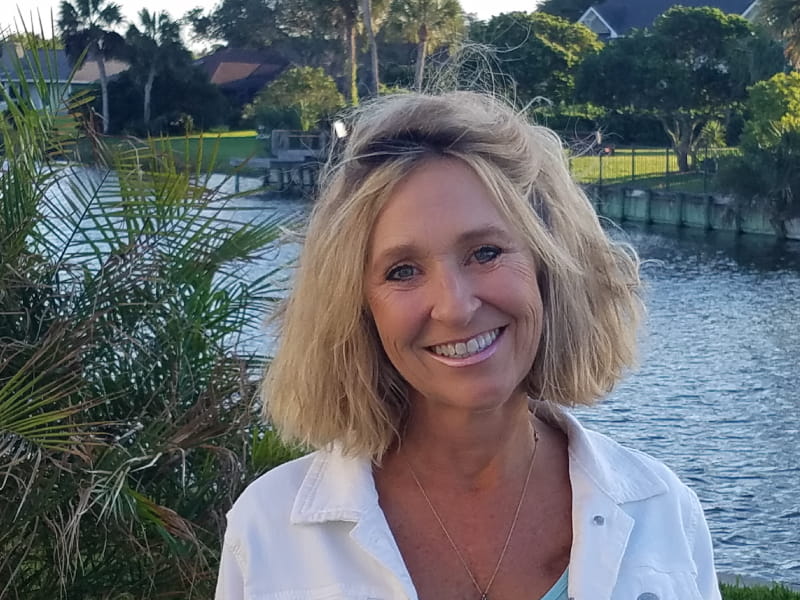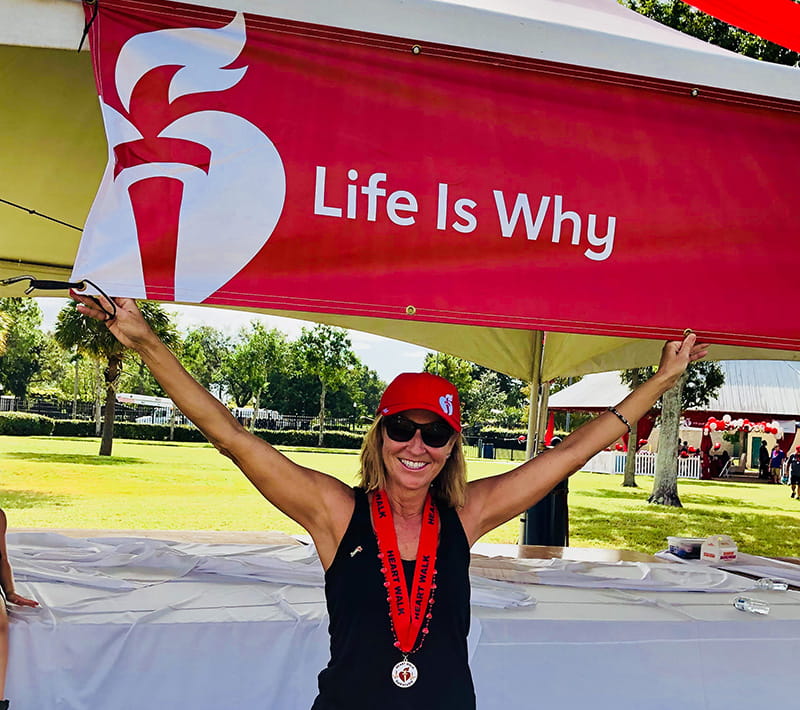Sisters bound by deadly family legacy – and by lifesaving transplants
By American Heart Association News

Jane Herndon and her family share an unusually close bond, forged through tragedy and triumphs. Their difficult journey began when Jane and her three sisters were in their teens and early 20s.
Their mother, Nancy, collapsed in 1981 at her daughters' school. Her heart had stopped, and she died a few hours later. She was only 41.
The pain of losing her endured for decades for Jane, her sisters Anne, Mary and Elizabeth, and their father, Emory.
When Jane was 22, a couple of years after her mother's death, she fell. Doctors told her she had a common condition that can produce an extra heartbeat.
"I was a nervous wreck after that," Jane said. "I always had in the back of my mind that I feared I had what my mom had."
A few years later, Jane was dancing with her sisters when she collapsed. She started turning blue and was unconscious for nearly a minute.
Paramedics arrived, her color came back and she seemed all right.
Two months later, Jane was driving with her 18-month-old son, Caleb, when she experienced something similar. She made it home safely and immediately called a cardiologist.
Jane was told she needed an implantable cardioverter defibrillator, a device that delivers a lifesaving electric shock to her heart if necessary. She was 31 with two young children and overwhelmed by the thought of what back then was a bulky device implanted in the abdomen.
"I think I just started wailing, probably pretty loud, in that office," she said.
Jane got the defibrillator and kept trying to cope with her biggest fear: "I never thought I'd see my kids grow up."
Over the years, as Jane's ICDs were replaced, they became more advanced and smaller. She went through four of them.
One night while sleeping, she sat straight up and then collapsed. Her startled husband saw she wasn't breathing and was turning blue. He was seeking help when he noticed her chest jump.
The ICD "did its job," her husband, Max, said.
By this point, doctors determined that Jane, her younger sister Anne Howell and their mother had familial dilated cardiomyopathy, a genetic condition in which the heart has trouble pumping and can fail over time.
Anne found it difficult to get out of bed to care for her two young sons. She had five ICDs that administered shocks 48 times over 16 years, once delivering 18 consecutive shocks.
"She was just totally drained," Jane said.
In 2009, Anne received a new heart.
"I was not waiting for someone to die. I was waiting to live again," Anne said. "I'm just thankful, so thankful."
Meanwhile, Jane, once an avid walker, grew weaker.
Like Anne, Jane had atrial fibrillation, a quivering or irregular heartbeat that can lead to blood clots, stroke and heart failure.
Also like Anne, Jane needed a heart transplant. But having seen what her sister endured, Jane was reluctant to go on the waiting list.
Then her doctor said, "Get your affairs in order."
A donor was found two months later. Jane received her new heart on Nov. 6, 2012. She was 51.
Soon, she felt the joy of a heart "beating so incredibly hard" it seemed like tennis shoes banging in a dryer. Sensing this new strength, she understood just how weak her heart had become.

Jane waited until last year before finding the right words to send to her donor's family. It was joyful yet unnerving to receive a letter back. She learned her donor was a woman who liked country music and, like Jane, had a close bond with her sister.
"She loved her very much," said Jane, who expressed her desire to honor the donor's memory.
Jane, now 58 and living in Ponte Vedra Beach, Florida, and Anne, 54, talk frequently by phone, often while each is on a long walk.
"We're a two-for-one kind of package, just being so bonded like that," Anne said. "I'm blessed that I have a built-in best friend to go through heart disease and transplants with."
They aren't the only family members who have dealt with heart disease.
Their father, Emory, had aortic aneurysm surgery; Jane's husband, Max, had two ablations for atrial fibrillation; and Jane's 30-year-old daughter, Rebecca, had an episode that indicated an irregular rhythm, so she too received an ICD.
"She has never been shocked but has that device in place if needed," Jane said. "I am thankful she has it."
Jane recently told her story in a video for the American Heart Association's Go Red for Women luncheon in Jacksonville, Florida.
She spreads the message that everyone must be their own best health advocate – and maintain hope.
"If you feel something funny going on, you've got to find that doctor that will listen to you," she said. "You've got to believe you're going to make it."
Stories From the Heart chronicles the inspiring journeys of heart disease and stroke survivors, caregivers and advocates.
If you have questions or comments about this story, please email editor@heart.org.




